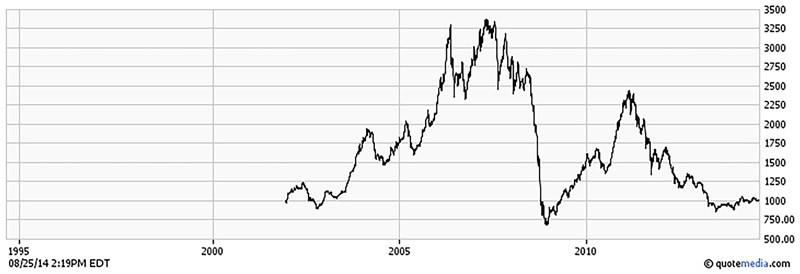5 Reasons to avoid lifecycle funds Canadian Business
Post on: 2 Апрель, 2015 No Comment

Regulators and legislators in the U.S. currently have lifecycle funds under the microscope and may be making changes to address some irregularities that have come to light.
Lifecycle funds (LCFs), also known as target-date funds (TDFs), are basically packages of equity and bond mutual funds that shift toward the bond funds as the investor approaches a retirement date. The idea is to put the asset allocation decision on cruise control, to automatically shift toward more conservative investments as the investor ages as classic asset allocation theory prescribes.
Its now becoming more apparent that asset mixes in LCFs can vary from provider to provider, and be rather aggressive in some cases. In the U.S. for example, it was found that 2010 target-date funds (one year to retirement) had allocations to equities ranging from 8% to 68% and those at the high end of this range experienced huge drops of 40% or more in 2008. If someone is a year away from retiring, they shouldnt be loosing 40% of their wealth, so something seems amiss here hence the recent scrutiny by politicians and regulators.
I never was a fan of lifecycle funds anyways. For the following reasons:
1. asset mixes: they shouldnt be based just on ones age but include other factors (that may change over time), such as size of nest egg, personal health, type of job, etc.
2. inflexibility: ones preferred retirement date may change from the date selected in a LCF and/or one may want to delay the phasing out of equitieswhen ina bear market, like now
3. high fees: mutual-fund management fees in Canada average around 2.4% annually and then there will be another fee on top of this for the wrap portion of the LCF
4. other investments: asset mixes in LCFs are usually designed as if the holder had no other assets; but if they do have other investments, an annuity or a pension, the LCF mix may be inappropriate
5. opaqueness: it sometimes is not easy to see whats inside i.e. asset mix and/or cost; its hard to compare LCFs from one to another
While we might avoid LCFs, we should not eschew the benefit of shifting toward more conservative assets as we age. And this is easy to do with a diversified basket of low-cost index funds or exchange-traded funds based on concepts like the Couch Potato Portfolio.
All it takes is a commitment to spend a few minutes a year to rebalance the portfolio. Dont let inertia or bull markets take you off the path dont be like one in four U.S. investors approaching retirement age (56-65) in 2007. On the eve of the bear market, they had more than 70% in stocks, according to the Center for Retirement Research at Boston College.














